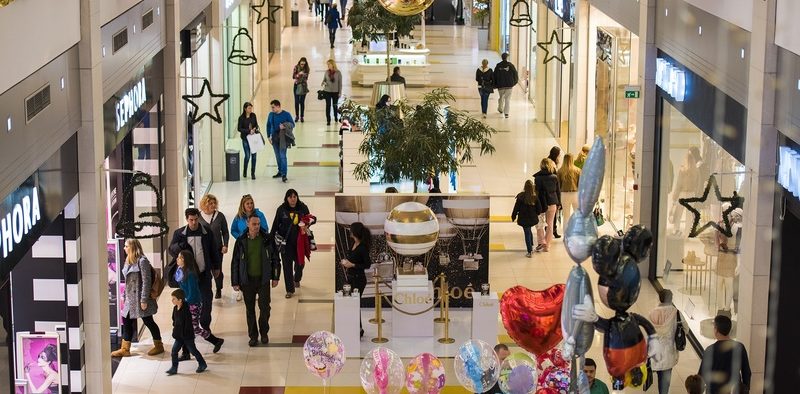4 Growing Retail Trends on the Australian Market
Share

Retail and its trends are changing, and if you’re a retailer, you don’t need someone else to tell you that. You may have already noticed that things aren’t what they once were. Customers and their expectations are changing all over the world, and Australians are no different.
If you want to keep up and remain relevant in the retail market, you’ve got to pick up on the latest trends and adapt as soon as possible. That is going to ensure that you remain at the forefront of the retail business and don’t fade into the background with the rest of the companies who cannot keep up.
More than ever before, changes are coming more often, so adaptability is extremely important. Here are the 4 growing retail trends that you need to be aware of (and replicate!) on the Australian market.
1. Faster shipping
Amazon has truly changed the game when it comes to shipping and it has effectively impacted customer expectations. People are no longer satisfied to wait for their packages. Everything needs to move at an accelerated pace, as overnight shipping and two-day shipping has become the standard. Research shows that Amazon is able to reach 72% of customers within just 1 day in the US alone.
Fewer people are willing to pay for shipping, as well, so it’s up to e-commerce retailers to speed up the process and cut costs in order to offer the shipping experience customers have come to expect.
But with prices falling lower and lower across the board, retailers are now almost entirely homogenized, making it more and more difficult to differentiate themselves. We will continue to see companies strive to bring innovation and a faster shipping & packing process, for cheaper prices and with a smaller environmental impact.
How to integrate it: streamline your product offer and invest in good relationships with reliable shipping companies. That is going to ensure a seamless delivery process and shorter waiting times for your increasingly impatient customers.
2. A focus on brand culture
In 2019, more than ever before, we noticed that shoppers are no longer willing to extend their patronage to just any brand. On the contrary – they are very picky, and for good reasons.
The brand culture, morals, and social responsibility are more important than they’ve ever been. Millennials are slowly overtaking other generations as the generation with the most buying power. And for them, ethics are crucial.
Whether we’re talking about problematic brand owners being boycotted, seeking cruelty-free brands, or demanding more visibility for minorities, Millennials are putting their money where their mouth is. As a result, we’re going to see a lot more “clean” brands, “ethical” brands, or brands that are otherwise making an effort to be inclusive for extra social points.
How to integrate it: incorporate a focus on social responsibility in your marketing and product presentation. Highlight the importance of this kind of responsibility in your culture, in your products, etc. An easy and effective way to incorporate this is to focus on a brand story about how your products are made, where they come from, etc.
Read Are you across global trends in retail? – 5 trends for Australian retailers to consider
3. Experiential retail
Everywhere you turn, everyone is talking about how traditional retail is dying. Stores are closing, retail giants are declaring bankruptcy, and more and more people are shopping online. But brick & mortar retail isn’t dying; it’s simply changing.
With so many brands on the market nowadays and so many affordable and convenient options online, it’s up to retailers to attract customers by offering something new. And that something is a unique in-store experience.
If you want to remain relevant, your store needs to offer something no one else is giving your customers. Whether that’s exceptional customer service that goes above and beyond or an innovative store design and atmosphere, your target customer needs to be enticed in order to step in.
How to integrate it: think outside the box and focus on giving your customers an experience to remember. Offering the bare minimum or basics just isn’t enough anymore. People want to be wowed and delighted.
4. Sustainability/circular economy
Tying into the point about brand culture and social responsibility, sustainability continues to be a hot-button issue. No longer a problem only on the minds of environmental activists, shoppers of all stripes are more concerned than ever before with the amount of waste retail creates.
Shoppers are demanding less wasteful packaging, better working conditions for employees, more environmentally friendly manufacturing processes and materials, etc. Based on this shift in the market, we can certainly expect a rise in focus on the circular economy.
Reusing and recycling will continue to grow in popularity, as a trend, and new companies will pop up with sustainability and circularity as a main focus. We’ve already been witnessing the rise of brands that manufacture with 100% recycled materials or deadstock.
How to integrate it: again, marketing is very important, in this case. But you’ve got to also back it up with facts. Make efforts to switch to sustainable suppliers and cut back on packaging waste. If there is any way to recycle materials, that is ideal. And put a lot of focus on your growing interest and commitment to creating a more sustainable business. Acknowledgment and good intentions matter to customers.
Concluding thoughts
With new generations of shoppers, retail as we know it is changing. We’ve been witnessing a big shift to eCommerce over the past few years, but that’s not the only retail trend that you should be paying attention to.
Staying on top of the latest changes is crucial if you want to remain a key player in this business. That’s why it’s important to know how to adapt and that’s what we’re learning right now.
As we move towards 2020, shipping for eCommerce is getting faster and the prices lower. In addition, experiential retail is the name of the game, along with sustainability and circularity. The Millennial shopper is also very focused on social responsibility, so that’s something to keep in mind, moving forward.
Integrating the latest trends does not have to be difficult. It’s just a matter of finding the right way to do it for your business.


















Follow us on social media